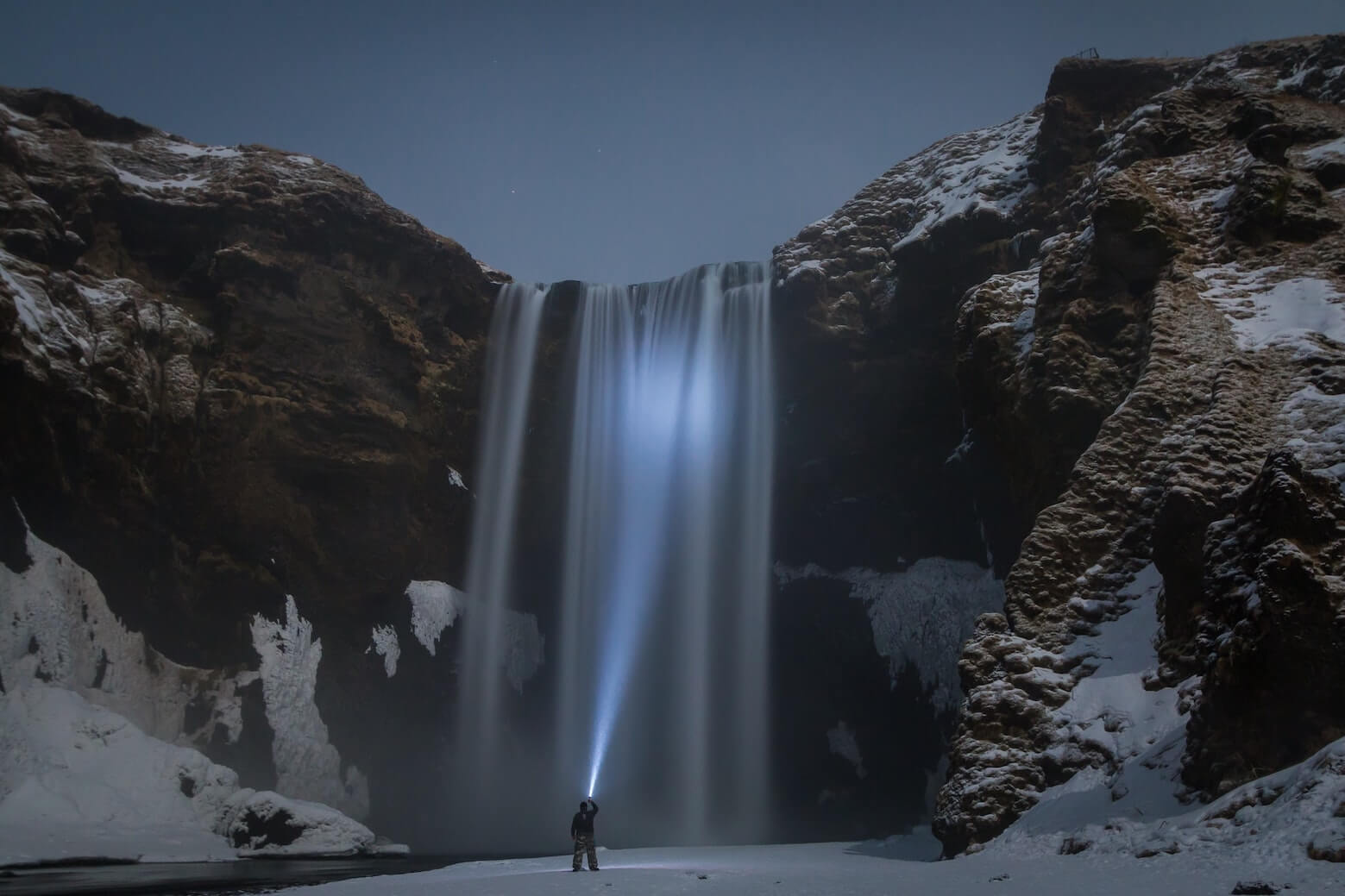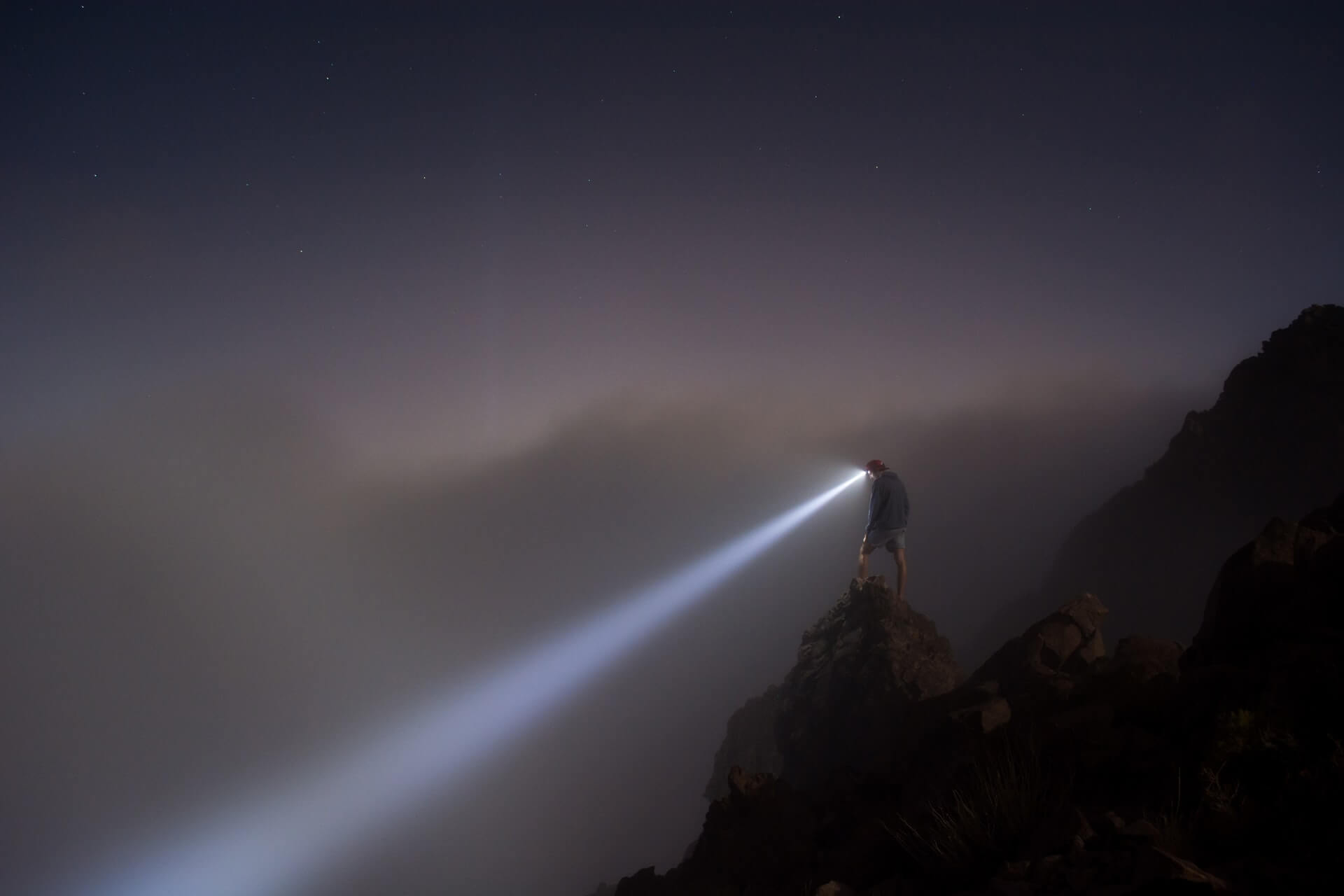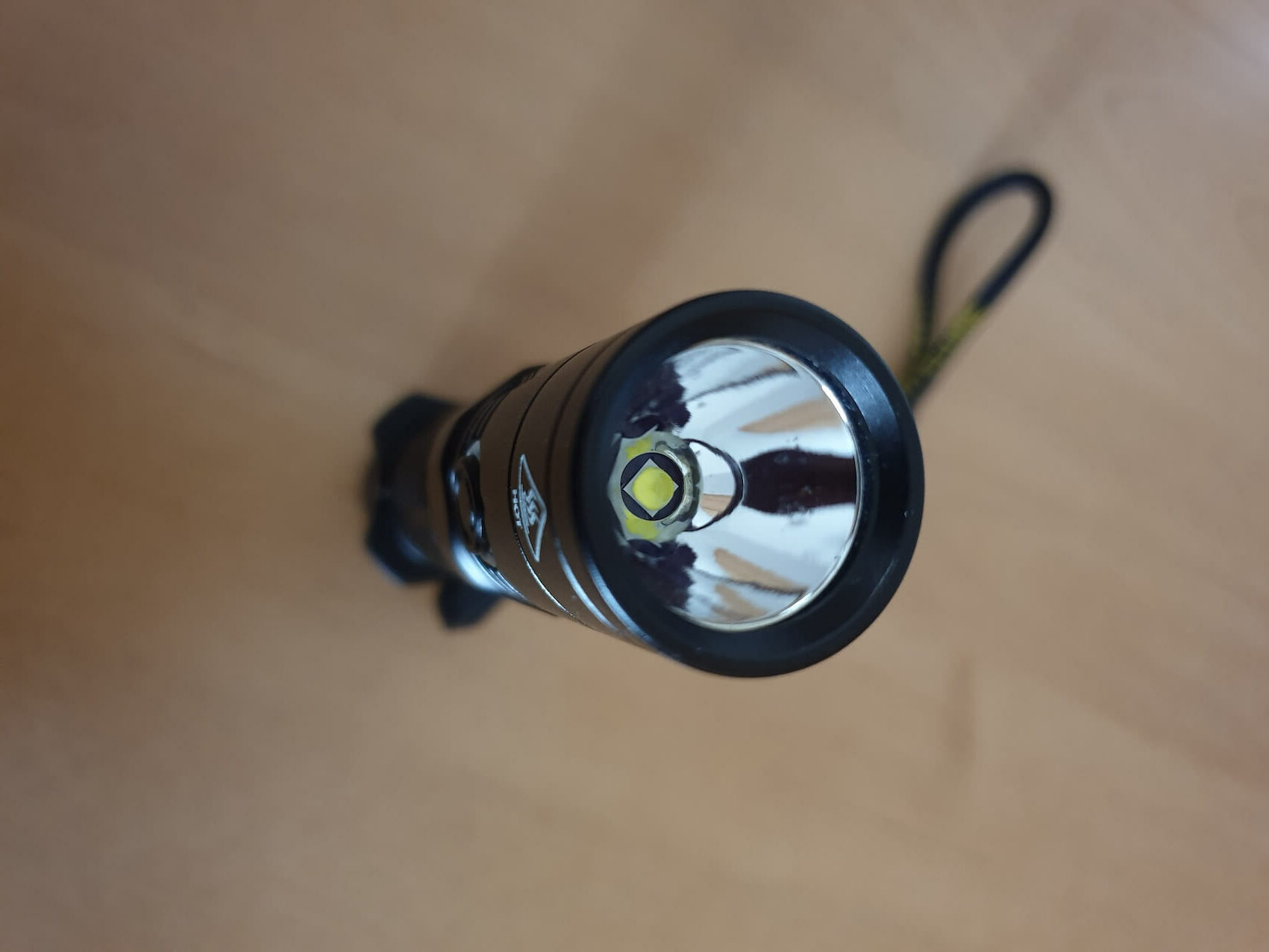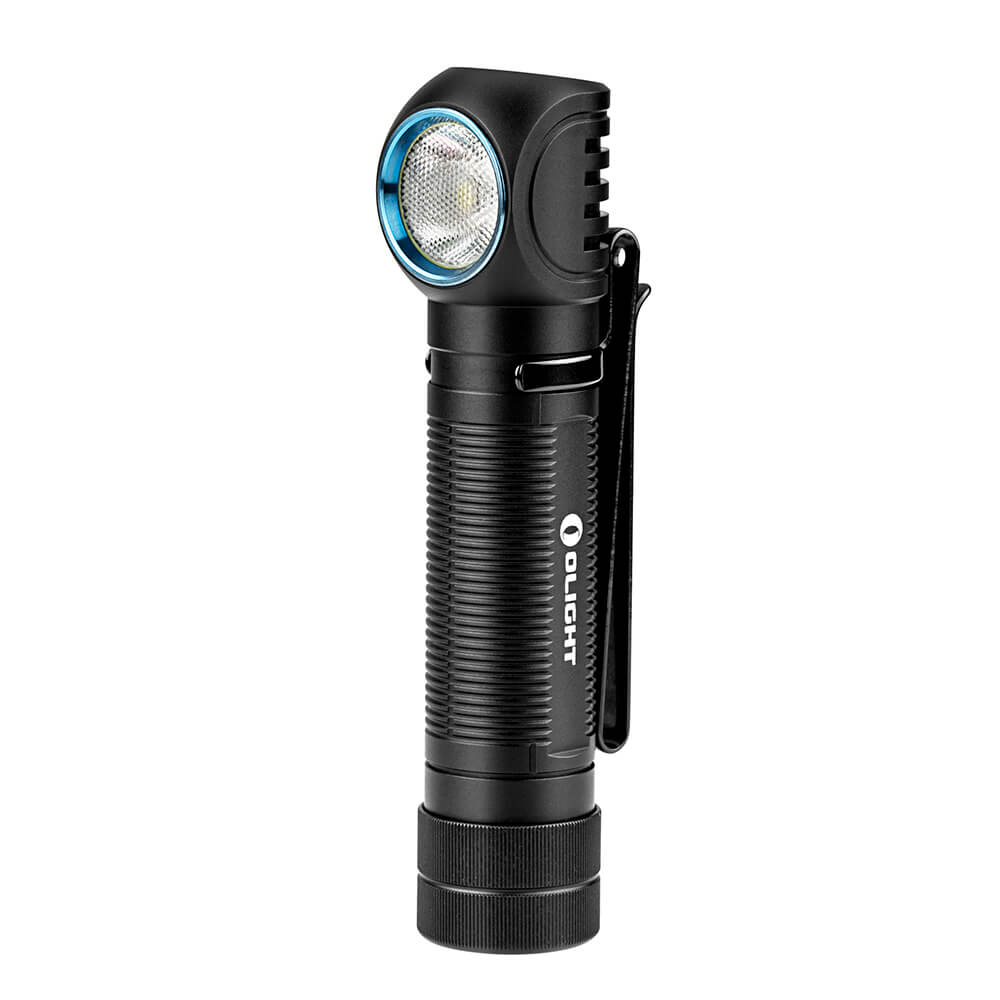A torch is an essential part of one’s camping kit list – more often than not, a campsite will have large areas where there is no lighting and so when it gets dark it can be virtually pitch black…
One might be forgiven for thinking that all torches are the same or at least similar… however, there are many different styles with many different functionalities and prices ranging from a few pounds to several hundred pounds.
In this article I will be looking at some of the best torches for camping and the essential features you’ll want your torch to have.

Types Of Power
The majority of torches are powered by batteries.
These could be alkaline batteries and the type will largely depend on the size of the torch – large spotlights will often use D batteries, while smaller torches are more likely to use AA, AAA or even CR123A batteries.
In the majority of cases it would be possible to replace alkaline batteries with lithium batteries.
Lithium batteries perform better in cold weather compared to their alkaline counterparts and also hold their charge for longer.
It’s always advisable to take spare batteries on a trip – the last thing you would want is for your batteries to die and not have a replacement to use immediately.
There are a lot of torches on the market that are rechargeable – these are powered by lithium-ion batteries and can be recharged through the mains or in a car with the correct adapter.
I usually carry a spare rechargeable battery with me, that way if the battery does run out of charge while I still need to use the torch – I can swap the battery and put the original onto charge.
In my opinion, rechargeable batteries are the best option – especially with the availability of smaller and smaller portable power banks.
Types Of Bulbs
The light intensity or power output of a torch is measured in lumens and is a measure of the total quantity of visible light emitted by a source per unit of time – the higher the lumen the more ‘bright’ the torch is.

Torches vary from an output of a few lumens to some which give out several thousand lumens.
For most camping situations a luminosity of a few hundred lumens would be sufficient.
There are a variety of bulbs that are used in torches – offering a varying range of light intensity, range and colour.
Incandescent Bulbs
Incandescent bulbs work by passing an electric current across a wire filament, which is protected from oxidation with a glass or fused quartz bulb that is filled with an inert gas such as argon and/or nitrogen – the temperature reached is so high that it causes the filament to glow and produce visible light.
The problem is that these bulbs are often fragile and inefficient in addition to producing heat.
They will also last less than 1,000 hours before the filament is worn out.
Halogen Bulbs
Halogen bulbs are similar to incandescent bulbs, but use halogen instead of argon/nitrogen.
These bulbs last a little longer as the halogen gas reacts with the tungsten filament and redeposits tungsten atoms back onto the filament, so that they can be reused.
Halogen bulbs can last up to 2,500 hours, they also run brighter and get hotter than their incandescent counterparts
LEDs
LEDs are brighter, more efficient and longer lasting than incandescent/halogen bulbs.
They don’t produce much heat and have a general life expectancy of 50,000 hrs!
They can also be coloured, which can be useful in a torch.
LED lights are definitely the option to go for.

Range And Beam Quality
This is quite an important aspect of the torch that often gets overlooked – the light should have a good balance between throw and flood.
The range should be sufficient to light up what needs to be seen in the distance and equally it should be easy to see what’s in front of you.
Good quality torches will produce a wide, soft and balanced beam with a smooth transition area.
Materials
An ideal camping torch should be strong, durable, light and weather-proof.
Torches are typically made of metal or plastic.
Plastic ones are generally cheaper, but they may be more prone to damage – unless they are made of a tough, shock resistant material.
Metal ones could be made of steel (heavier), aluminium (lighter, but not as strong) or titanium (light and strong, but more expensive).

Other Features
Modes
Many torches have the ability to change luminosity – for me this is an essential feature – you need to able to have a low luminosity setting for use in certain situations, for example around your own campsite where there are other people but also a higher luminosity if you’re walking through the woods by yourself.
Other modes include strobe or SOS and different colours (such as red to preserve night vision).
I’ve noticed that a lot of the premium torches have a moonlight mode (less than 3 lumens) instead of the red option – I prefer the moonlight option over the red filter as it is low enough to preserve night vision, but still allows you to see the true colours of your surroundings.
Waterproof
Considering that a torch will be used outdoors for the majority of the time – for it to be waterproof is an extremely useful option.
The level of waterproofness is shown by the IPX rating.
Clip
This is a useful feature to allow the torch to be clipped to a belt or backpack.
Location Of Power Button
The power button should be easy to find and operate, even in the dark and even while wearing gloves.
Head Torches
Head torches are useful if you need to keep your hands free, but they can be a bit annoying if you’re in a group as the light can easily dazzle other people if you look towards them.
Conclusion
So which type should you go for?
That’s the difficult question – there are so many options out there and it really depends on your needs and budget… but remember, choosing a torch is an investment, that should last you for many years.

I’ve had quite a few hand torches and head torches over the years, but my favourite by far is the Olight H2R Nova – it’s an innovative and beautifully crafted torch that has many useful features and also doubles as a head torch, you can read my review of it here.

I hope you’ve found this post useful.
Happy torch hunting!
If you have any questions or comments, please leave them below and I’ll get back to you as soon as I can.
Mohammad


This was a nice breakdown on lighting options when camping outdoors. Have you had a chance to review any options that can be charged using solar power? I’m thinking those could be effective back up options even though they might take a little longer to charge. I appreciate the information!
Hi Karl
Glad you found the post useful.
I’ve not really had a need for solar powered options up until now… but you’re right, these would be very useful for longer trips into remote areas.
I would definitely go for a head torch with LED. I used to be a search and rescue leader and these are the best torches going on a trip. I always use to have one hand held LED torch and a couple of head torches with LED. And of course a lot of extra batteries. I think all your advices are great. It is important that it is waterproof. You never know if it is going to rain. The clip is great to have too. The button is important that is easy to find and the adjustment buttons of the light so you can switch from a close radius to a longer radius. My tip is to try it out before you go on a trip to see how far you can see in the dark.
Agreed – good idea to try it our first… everything is returnable nowadays, so if it’s not good enough you can simply return it.
I always used to carry a handheld torch and a separate head torch at camp, but since I got the Olight H2R Nova, a handheld torch that doubles as a head torch – I just carry that with me (although I always carry a spare torch in my backpack as a backup…).
Hey Mohammad,
Thank you for all the useful information about what to look for when picking out a torch. I have a quick question and apologies in advance if it is a silly one!
What I want to know is if there are torches available that allow a person using them to change the beam. For example, If i only want to have a wide and close-up area lit up as opposed to a narrow beam that lights up a focused area in the distance or vice versa-Is this feature available on torches?
Hi Sasha – thanks for your comment and your question is a very valid one…
There are torches that allow you to change the beam from wide angle to narrow angle – one such torch is the Ledlenser P7/P7.2.
However, I’ve found that the better quality torches have a fixed width beam, which is wide, soft and balanced and has a smooth transition area – allowing you to see clearly in the distance, while also allowing you to see clearly what’s close to you – The Olight H2R Nova does this exceptionally well.